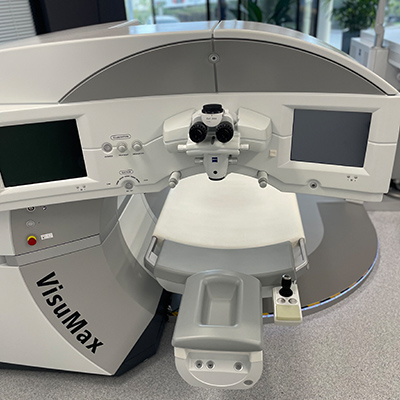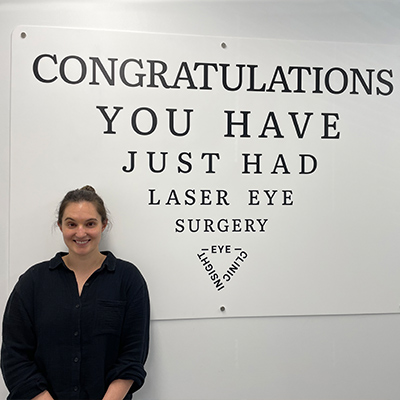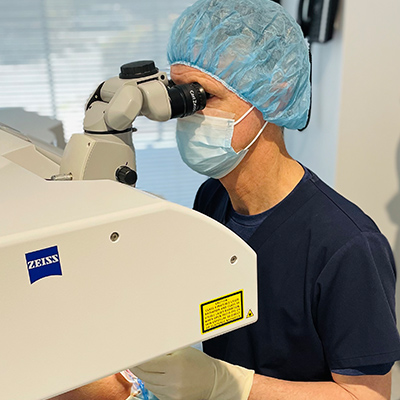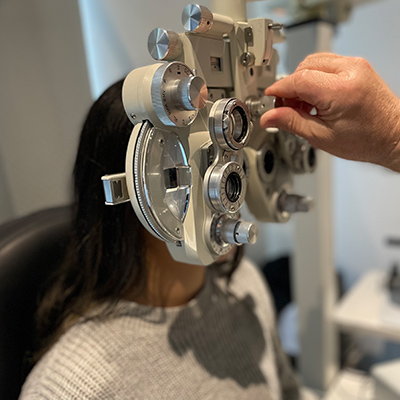Common Cataract Concerns and Questions
Cataracts are the cause of half of blindness and 33% of visual impairment worldwide. With there being so much information available on the internet these days about anything we want, it can be daunting and difficult to find the information that is most relevant to us. We often seek out information from family and friends who have been in the same situation. A good recommendation is often our preferred method of choosing the right doctor. We definitely agree that a great word of mouth referral rarely steers you in the wrong direction.
Cataract referrals are the source of almost all of our patients whether it be a patients recommendation or a health professionals.
 Our eyesight is one of our most precious commodities so we want to be secure in the knowledge that we are choosing the right doctor for the job and have received necessary education. We have compiled some of the most common concerns and questions that we get from our patients. Insight Eye Clinic want to ensure you make the best possible choice for you and your eyes.
Our eyesight is one of our most precious commodities so we want to be secure in the knowledge that we are choosing the right doctor for the job and have received necessary education. We have compiled some of the most common concerns and questions that we get from our patients. Insight Eye Clinic want to ensure you make the best possible choice for you and your eyes.
Cataracts are most commonly age-related and are formed from a change of the proteins within the crystalline lens which sits just behind your iris inside of your eye. This build up causes a clouding of the lens, therefore, keeps light from passing through the eye and causes reduced vision. Other causes of cataracts include: • An inherited congenital condition – Approximately 0.4% of babies are born with congenital cataracts. They are a result of one of many causes whilst in utero and sometimes require immediate surgery. Other times, they are left until later in life when the foggy lens begins to effect the vision more. • Traumatic – Traumatic cataracts occur secondary to blunt or penetrating ocular trauma. • Medication – Long-term use of steroids and diuretics can cause an early onset of cataracts. • Radiation – Exposure to toxic substances, ultraviolet light (specifically UVB) and microwave radiation has also been found to cause cataracts. • Underlying medical condition – Often, one medical condition will contribute to the development of others and most commonly, diabetes is found to directly affect our eyes, whether it be contributing to or progressing the development of cataracts or diabetic retinopathy which is also a leading cause of blindness is those under 65. • Vision that is cloudy, foggy, blurry or filmy • Light sensitivity (particularly at night), glare and halos which can cause difficulty whilst driving • Yellowing or fading of colours • Constant changing of glasses or contact lenses with little improvement to vision • Double vision in the affected eye A quick and easy consultation process with your doctor is required prior to cataract surgery. During your consultation, many measurements are taken to ensure the correct lens is selected for your eye using ocular diagnostic equipment. Your pupils will be dilated and this is done using an eye drop that relaxes the iris in order to assess the cataract’s severity in detail and to perform a health check of the whole eye. Your pre-operative visual acuity will be tested and your tolerance for different visual outcomes will also be tested. In some cases, a contact lens trial is required. In order to prepare your eye for surgery, you will begin an antibiotic eye drop 3 days prior to your procedure. On the day of your surgery, your procedure is likely to take only 20 minutes although you will be at the hospital for approximately 3 hours. During this time, you will be met by the nursing staff who will go over some pre-admission questions with you and prepare you for your procedure. Most patients have a local anaesthetic to numb their eyes which is in the form of an eye drop and a mild sedation to help with any nerves or anxiety. Some have a general anaesthetic for various reasons which may include, severe anxiety making them at risk of large movements, underlying health issues, preference and many more. Your eligibility for a GA will be assessed by your anaesthetist. Dr Furness will guide you through the procedure and advise you where to focus. You should NOT experience pain during your procedure. Occasionally you might experience a small amount of pressure usually preceded with a caution from your doctor. A 2mm slit is made in the cornea and your doctor will use a small instrument to break up and remove the cloudy lens from inside the eye. Once removed, Dr Furness will then insert the new lens and position it in place. No sutures are needed as the incision is so small and your eye begins to heal immediately. A quick post-operative check is performed on the day of your procedure or the following morning to check the pressure of the eye as it is very common to see a temporary increase in ocular pressure after surgery. Various solutions are available if you experience this so please do not be alarmed. (Click here for a video overview of cataract surgery) Monofocal lenses are used to correct the dominant eye for distance vision and the other for near vision meaning it is unlikely you will require glasses after your procedure but in some cases, people require glasses for finer tasks such as needlework or very small print or long distance night driving. Approximately 20% of people’s brains cannot adapt to this visual result and find they experience a sea-sick feeling or problems with depth perception. A contact lens trial is sometimes necessary and allows us to simulate monovision which is how your doctor determines the suitability of this visual outcome. Other procedure types are available for those that cannot adapt to monovision. For the 80% who’s brains’ do agree with this outcome, they are generally extremely happy. Trifocal lenses feature a series of rings which diffract light to allow you to have very good distance, intermediate and near vision. The same lens type is used in both eyes meaning that you will not experience the same imbalance that some get from monovision. Dr Furness at Insight Eye Clinic has researched the most advanced lenses to give his patients the best possible visual result when having their cataract procedure. Follow this video link for a visual demonstration on how Trifocals could benefit you. Using a monofocal lens to correct both eyes for distance vision means that you will require reading glasses after your procedure, even if they were not required before. Some people prefer both eyes for distance vision if they experienced an imbalance with monovision, a large amount of glare or halo’s with trifocals or are happy to wear reading glasses. We find that the people who are most happy with this visual outcome, typically have a very high refractive error before their procedure. This visual outcome might also be preferable for occupational reasons. Cataract surgery is commonly done one eye at a time although it is perfectly safe to have both eyes corrected at the same time. In Australia, due to our Medicare ruling, if you have private health insurance and are covered for your cataract procedure, you will not be fully reimbursed* if both eyes are corrected during the same procedure, therefore, it is recommended having your procedures on separate dates (if both eyes require surgery). You can drive as soon as your vision is comfortable following your procedure or once you meet driving standards. Eye drops will be provided and are imperative to the healing process. Your doctor should provide you with a medication chart or something helpful to track your daily drops. Full aftercare information will be provided by your doctor and the clinical staff prior to your procedure but always ensure you contact them if you have any concerns or questions. Click here to go to the ‘Health Funds’ page Private health fund Some health funds require that you pay a small gap for your procedure. It is important to enquire with your health fund as to your eligibility prior to surgery and what your likely gap is, if any. They will require the provider number of your reputable and listed surgeon. You can obtain this from admin staff at their premises. If you are not covered for your cataract procedure via your health fund or are uninsured, you may elect to go on the public waiting list for your procedure. Wait times are subject to the severity of the visual impairment caused by the cataract and government allowance. It is usually a minimum of a 6 month wait for the first eye and up to a further 3 months for your second eye. Please enquire with your preferred provider as to their individual waiting time. If you are uninsured and do not wish to wait for a surgery date via the public system, you can opt to go private uninsured. If you are eligible for Medicare cover and your provider charges within the Medicare Benefit Scheme allowance, you should receive approximately $700 back from Medicare. Please enquire with your provider about the exact cost of your procedure once benefits have been paid and what you are entitled to.
Monovision (aka blended vision)
Trifocal lenses
Distance vision in both eyes
*Please note: depending on your health fund and level of cover, there may be a small gap for your cataract procedure. Your surgical co-ordinator can advise you of the details.
Follow this link for more information on aftercare eye drops.
Cataract and eye lens procedures limits and benefits change depending on your choice of hospital product, the level of cover you choose and how long you’ve been an eligible member with your health fund. Most health funds require a 12 month waiting period before you are deemed eligible for an existing health condition.Public waiting list
Private uninsured




